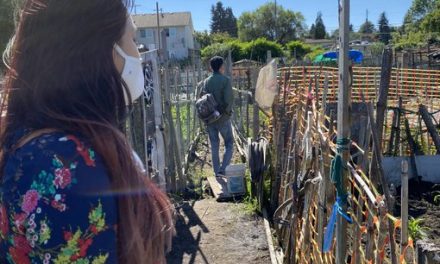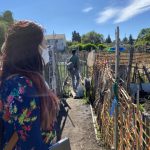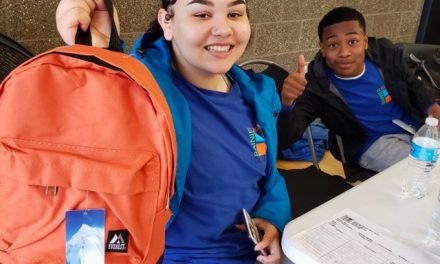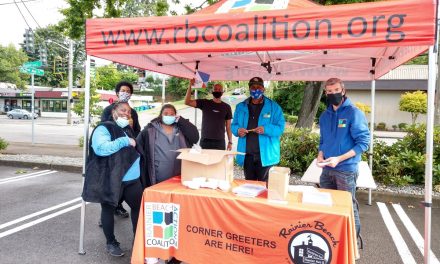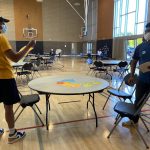
ADULTING 101: HOW TO RESPOND TO MENTAL HEALTH STRESSORS IN THE RAINIER BEACH COMMUNITY
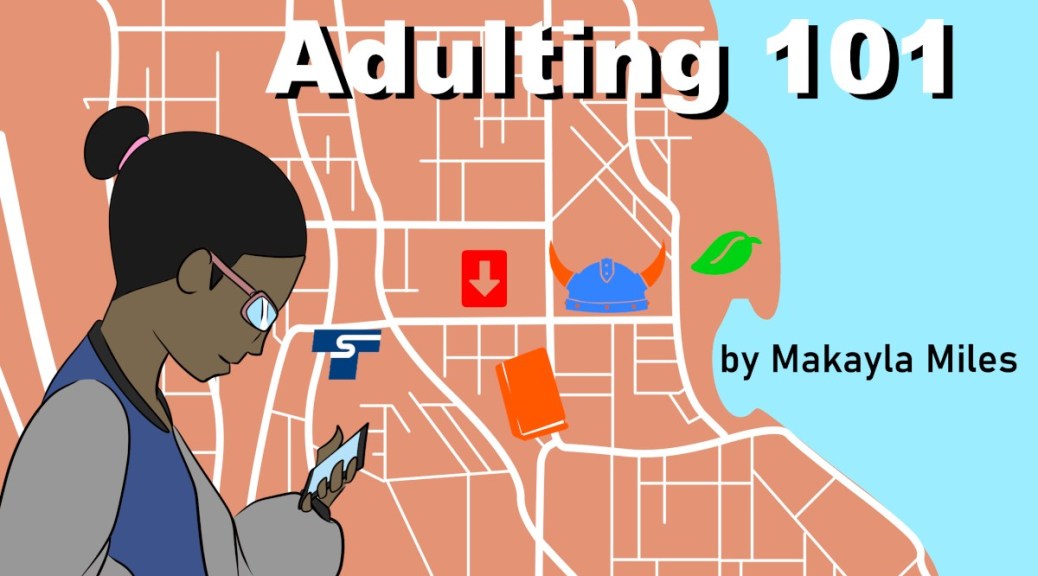
This is the first in a series of articles drawing from experiences of the many young adults employed by the Rainier Beach Action Coalition (RBAC) to improve their community. Each article will tackle practical issues young adults in our community should have learned about in school but often leave school without knowing.
If you’ve lived in Seattle’s South End neighborhoods long enough, you’ve most likely heard the reputation surrounding Rainier Beach, or maybe you’re aware of the way it is portrayed in traditional media outlets. It seems the only time these communities make the news is when something bad happens, ignoring all the positivity that happens. Seattle can point to the violence, but never meaningfully address its root causes, or even take note of what local organizations are already, successfully, doing to prevent the continued violence.
The lack of economic opportunity in the South End is the driver of crime, the creator of poverty, and the cause of anxiety chronically impacting mental health. The question becomes how can we ensure opportunities for our young adults that will allow them to be successful, to become homeowners, or to become business owners? How can we ensure they have the ability, if they choose, to stay in the neighborhood they were raised in?
According to this Seattle.gov infographic, 27% of Rainier Beach residents live below the poverty line. Food insecurity is also an issue that has been exacerbated during COVID-19. Black homeownership is declining in Seattle, and it seems like gentrification is closing in on Rainier Beach, making 98118 no longer the most diverse zip code in the city. Young adult voices are often missing from the conversation, even though these issues are compounding.
These issues are affecting the mental health of our young adults, and that’s not talked about enough. Recently, I spoke with the 16- to 24-year-old participants in RBAC’s Young Adults Transitioning to Adulthood (YATTA) program to get their honest opinions about things occurring in their neighborhood: the good, the bad, and the needs of the Rainier Beach community.
The first question I asked was “What are the elements in the community that have a negative impact on your mental health?” Here are a few of their responses:
Hani: “I see people in the Rainier Beach community being overlooked, and the state of the community shows that. I hate that they start improving things when more white people move into the area but don’t have that same care for us.”

Bahsan: “Hearing [about] a lot of death in Rainier Beach is making me sad. It’s really sad. There’s another human on the other side of the gun. It makes me upset.”
Zion: “One of the things that used to eat me up inside was my housing situation. The landlord was horrible; no one deserves that. Housing plays such an important role in mental health. Since I moved into a new apartment complex, my mental health is better. We need affordable housing, but the housing that we get is not of quality. The increasing white population of the South End … that hurts a little bit. White people were disgusted with Rainier Beach, and now they’re all up in there? White people own homes, and there are very few Black homeowners in Rainier Beach.”
This is a small sample of the serious issues compounding to traumatize young adults in Rainier Beach: from feeling invisible, to violence in their community, to a lack of quality and affordable housing.
Community Assets
There are, however, things being done to combat those problems. Rainier Beach: A Beautiful Safe Place for Youth has multiple programs aimed at making the community a safer place to live. Safe Passage or the “Be Safe Bros” are out in the community making sure students get home safely. The Corner Greeters (distinguishable around Rainier Beach by their blue RBAC hoodies) activate five hotspots: Safeway, Rainier Beach Light Rail Station, Lake Washington Apartments, Rainier Ave South and South Henderson Street, and South Rose Street. They activate the areas by picking up litter, posting headlines on Twitter (so the community knows what’s going on), collecting responses to safety surveys, passing out flyers and information, and interacting with the community about upcoming events. They engage the community, and their presence makes that hotspot safer, measurably reducing crime.
The Rainier Beach Community Center and the Rainier Beach Library are safe havens for the Rainier Beach Community as well. Both have effective programming aimed at teens, and teens make use of these hubs.
In addition, some schools have health centers offering free health services to students. Even before the pandemic, ensuring all students had their needs met was an incredible challenge. There were several strong programs, but thousands of students to support.
Although the community tries its best with inadequate resources, there are obviously some gaps, and since the safe havens are closed due to COVID-19, and face-to-face programming has all but come to a halt, these gaps are being exposed.
Since schools are closed, students no longer have access to the health services once offered at their school. Since local schools are operating virtually, the Be Safe Bros can’t be out there engaging the community.
The Corner Greeters, for the first few months of the pandemic, weren’t running any face-to-face programming at all. This meant they couldn’t connect with the community on a weekly basis like they usually did. While this affected the community, it also impacted the young adults who depend on participating in the Corner Greeters to support themselves or their families.
After school programs such as sports, drama, or student government were also activities young people looked forward to. Now that they’re without these outlets, trapped in front of a computer screen, the importance of mental health becomes even higher.
Envisioning a Mental Health-rained Community
Ideally, taking care of your mental health should be encouraged at an early age. When someone asks Rainier Beach youth how they are doing, they are likely to give any of a set of answers that are evasive at best. Imagine if we could be open and honest with each other about the struggles we are facing. It is hard to break the cultural norm that doesn’t allow us to share how we are feeling with each other. However, the way to combat this is to have schools set up spaces for students to talk about things they’re going through during the school day. This could result in people being comfortable speaking to each other about how they feel. When we know how other people are feeling, we can empathize with others and make people feel less lonely. These spaces could potentially provide meaningful support for students and adults alike. Also, having community members go through Mental Health First Aid training could make the community more aware of when mental health problems are forming in our young adults. While all of this would be fantastic to have in place, it doesn’t cover the root causes of some of these mental health issues.
The Need for Mental Health Classes
These young adults are consistently being exposed to trauma. Programs that would give them stability have been shuttered, and we’re still expecting them to be okay? There is a clear need for students to learn about their own mental health so they will have the tools to cope with trying times.
While health classes cover mental health issues briefly, it’s not nearly enough. Currently, Seattle Public Schools (SPS) require just 0.5 credits of health or family health classes to graduate. For most students this is a single forgettable class they take freshman year of high school. In contrast, 1.5 credits of physical education is required to graduate. While physical health plays an important role in mental health, we need to be talking about mental health way more. Everyone I asked for this article said they learned about mental health early in their high school years but didn’t start taking their mental health seriously until junior year or later. However, most negative experiences within the school system seem to start much earlier.

Here’s one YATTA’s experience:
Zion: “Having been to Rainier Beach and Aki Kurose, it has always been a majority POC population being taught by teachers that don’t reflect our demographic. It was in 2016 when people started to become woke; a lot of our teachers were white liberals. A lot of teachers were like, ‘We read these things, we did this …’ but they are still discriminating. SPS is filled with white teachers failing to hold space for human emotions. Somebody had tried to shoot up school, and we all had to leave. Classmates had [International Baccalaureate] IB testing the next day. We were all rocked from that experience. They didn’t give us time to unpack that experience. We went on with testing. You [the white teachers] didn’t hold any sort of space for us to work through that, and we took a dumb fucking test?”
I’m sure we can all relate to having some bad experiences while in high school. As we get older, we gain more confidence and experience to maneuver through tough situations. While learning from less-than-ideal situations is thought to build “resilience,” it should be equally important to instill confidence and teach mental health tactics before issues arise.
This means starting to teach middle schoolers about the importance of mental health. Middle school is where students get their first dose of independence and learn how to take care of themselves. It’s when a lot of things affecting mental health are happening for students. Mental health education should be a natural part of their learning process.
For example, Bahsan shared this negative experience which actually happened during middle school: “I was really angry. I was at Aki for two weeks. … They made me transfer to a lower class. I felt dumb. They made me feel dumb for being in a Special Ed class. I went to the principal. Just because I had a learning disability. I just felt a type of way about it.”
Imagine going through your first year of middle school being criticized for something you can’t change? It stands to reason sixth graders don’t have the necessary experience to navigate these conflicts, especially with people who are in positions of power. For two weeks, she had to go into an environment that had a negative impact on her mental health, even though those aren’t words a middle schooler would use to describe what happened. How are students supposed to know if they aren’t ever taught?
Some middle schools in Washington state have already realized this and implemented the Screening, Brief Intervention, and Referral to Treatment (SBIRT) model to help students get the help they need. Although some Seattle schools have adopted this model, none of the South End schools have. There are three school districts (Lake Washington, Tahoma, and Kent) using a survey that identifies students strengths and areas they may need help in. If outside help is required, then they can make the necessary referrals.
While this is a great start, it’s not enough. Students need to be educated explicitly about their mental health before problems start so they can practice good mental health habits early and become aware when things are starting to affect them.

Mariam: “I don’t think it is taught enough in schools. I first heard [about mental health] in freshman year. … We talked about it in health class but not in depth. All P.E. classes and health classes should talk about mental health.”
Bahsan: “I think mental health should be taught. Kids and young adults need to be more informed. They are going through mental health issues, but they don’t know what to do. They should have classes and circles in schools. Circles are a safe place where everyone is listening.”
Zion: “It’s not enough to just have classes; young people need spaces. They need to be educated. Young people are becoming more aware of mental health issues, but you can’t go through it alone. After mental health classes what happens? People in the neighborhood are suffering everyday. … They need resources for mental health to be helped outside of class. A class is not enough. School is where mental health issues start, where young people are being shamed, bullied.”
Despite not having had much formal mental health education, or getting it too late, these young adults have found ways to realize what is happening with their own mental health. They didn’t start to deal with their mental health until they were struggling with it. Although still only young adults, they’re already veterans of the mental health struggle.
Here are more of their insights:
Mariam: “When I wasn’t in the best mental headspace, I didn’t learn the significance until junior year of high school. Learning from personal experience is where I learned to take care of myself.”
Hani: “I realized I wasn’t taking care of myself, and it wasn’t good for my mental health. Making sure I do basic things to take care of myself. Buying clothes to feel good. Making yourself happy.”
Zion: “In high school I got a lot of positive messaging. In 2019 I started taking it seriously. I take the help I need. I can’t wait for other people to make me happy. I gotta do it on my own.”
Charles: “Maintaining a good mental [headspace] is an around-the-clock thing; you have to always be on alert. You have to know how certain situations will have a negative affect on you in advance, and avoid them. I don’t know what age I learned to take care of my mental health, but I was definitely over 18.”
Mariam: “[Mental] Hygiene is important to me. Reading my daily morning affirmations, that’s something important for me to start my day right.”
Hani: “I have been drawing a lot, and not trying to overthink or stress about things.”
Bahsan: “Not overthinking too much. Thinking for too long irritates me. Trying to keep my head clear: self-care, relax, and chill. When I make mistakes I don’t beat myself up too much.”
Zion: “I’m resting, taking breaks when I feel like I need to take breaks. As [a] leader in the South End I feel pressure to talk about things. Trusting community. Knowing I don’t have to take care of so many other people. Doing what makes me happy.”
Mental Health Organizations in the South End
Besides schools, there are community organizations addressing the mental health challenges faced by members of the South End community. Valley Cities and Atlantic Street Center are two such organizations. According to the Valley Cities website, they have “provided mental health services to people of all ages for nearly 50 years.” They also provide Mental Health First Aid training and teach people to look out for the signs of someone who is going through mental health issues or is at risk for developing a mental health problem. They are providing virtual training (for free!), and anyone can register on their website.
The Atlantic Street Center also provides mental health services in the South End. They realize the struggles students and parents are facing, and their goal is to make their services accessible to families. They provide free counseling services to anyone enrolled in Medicaid or eligible to receive Medicaid funding. According to their website: “Our team can help you apply for this benefit. If you are not eligible for Medicaid, we may be able to provide services through other funding areas, or to offer a sliding pay scale.”
RBAC is also doing their part by hosting community healing spaces. Almost every Friday, RBAC’s youth Corner Greeters and YATTAs set up at Safeway where community members can have safe, open conversations with each other. This healing space was RBAC’s direct response to the violence that has occurred there.
It’s now more important than ever to listen to people’s voices, especially young adults who are suffering.
Featured image designed by Messiah Fagerholm.


